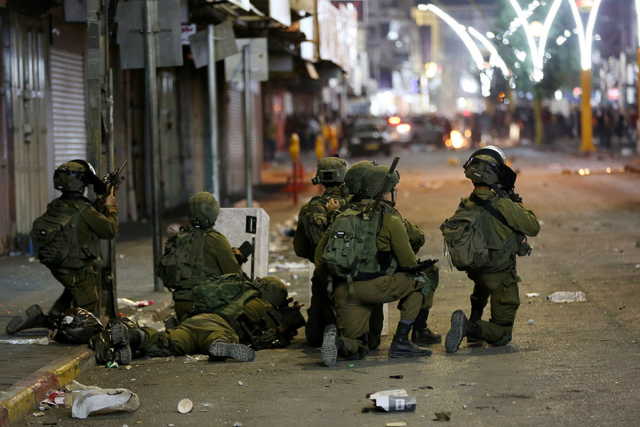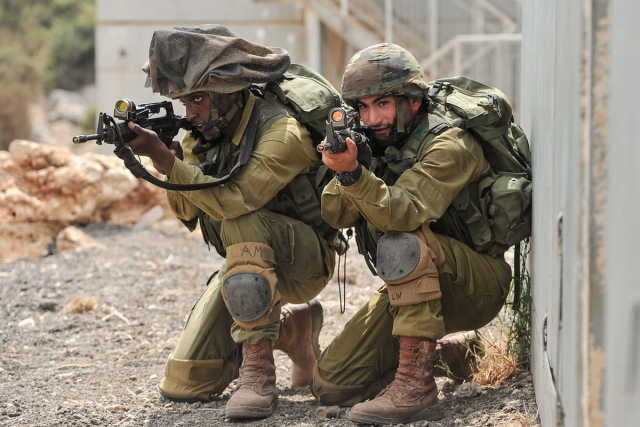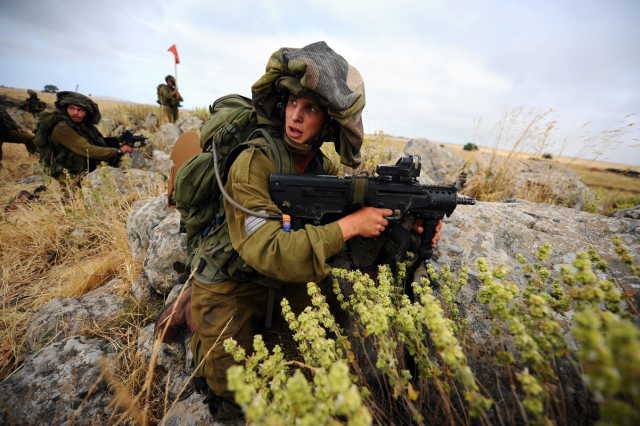We continue to publish an article by Avi Yager, a researcher at the International Institute for Combating Terrorism of the Interdisciplinary Center (IDC, Herzliya, Israel) on the reform of the Israel Defense Forces (IDF). In the first part focused on the reasons for the reforms. Now we will go further…
The new IDF Battle Group
According to the source, in the summer of 2015, under the leadership of the Chief of the General Staff B. Ganz, the IDF launched the Gideon multi-year plan (GMYP). Its essence was the reduction, modernization and reform of the Israeli Armed Forces in order to resist asymmetric opponents who received priority over the traditional state military mission of the armed forces. The IDF began to reduce combat and non-combat units in both active and reserve military formations. The number of positions of the rank and file of regular units was ordered to be reduced by 10%. The number of non-commissioned officers should be reduced from 45 to 40 thousand military personnel. At the same time, there was a reduction in the mobilized reserve. The service life of conscripted men has decreased by 4 months, and it is expected that in the coming years it will be reduced by another 2 months. Most of all, parts of the reserve suffered from GMYP, the number of which the plan proposed to reduce by 30%, which means releasing 100 thousand people from 300 thousand active reservists.
Perhaps the most profound changes proposed by GMYP concerned the IDF's battle formations. Since the creation of the Israel Defense Forces (IDF), the divisional formation has been the main operational combat group of the IDF. After the Yom Kippur War in 1973, the degradation of conventional warfare and the increase in the number of non-State opponents led to the erosion of the division's structure as the main combat unit of the army. In the future, the IDF operated in small areas of the West Bank, the Gaza Strip and southern Lebanon, which did not require and could not accommodate large operational groups.

The IDF in the Gaza Strip
From now on, the IDF's tasks were not to occupy the vast territory of the enemy State, but to establish operational control over geographically limited hostile areas and eliminate local threats (for example, missile launchers or tunnels for arms smuggling). The military potential of non–State opponents, which the IDF increasingly opposed – disorganized militias in southern Lebanon and local Palestinian terrorist cells in the West Bank and Gaza Strip - no matter how developed they were, did not justify the involvement of entire formations. In addition, the deployment of large operational groups could lead to more casualties, increased collateral damage and inefficient use of combat forces.
The IDF began implementing a new operational doctrine in 2011. In accordance with it, brigades were formed as independent combat groups, and not as structural units of divisions. The competence of each brigade included the ability to plan and conduct ground operations without the support of the division. The new Brigade Combat Team (BBG) consisted of 6 battalions, including infantry, armored, artillery and engineer-sapper units. In addition, each battalion could now communicate directly with the Air Force and Navy for exfiltration or fire support. To ensure better control and coordination between the battalions, each BBG received its own headquarters. These headquarters maintained constant communication with other field forces, as well as with neighbors and senior command. Now the brigades were responsible for managing their rear, logistics and tactical maneuver.
The main purpose of the formation of the new BBG was to create a combat unit that would be more relevant and effective in future conflicts against Hezbollah and Hamas. The IDF command expects that future conflicts will be characterized by dynamic opponents who, in addition to acquiring new skills and weapons, are constantly changing their structure and tactics. The transition to smaller combat groups with combined capabilities of various categories of forces and the ability to independently plan and execute operational plans increases the efficiency and flexibility of the IDF.
In turn, the author notes, the undertaken reform of the main battle formations of the IDF had a profound impact on the organization of the types and types of troops that provided forces for the new brigades.
Infantry
In recent years, the IDF has reduced the number of its infantry units and expanded the police force guarding Israel's borders and occupied territories. In 2005, the IDF formed a new infantry brigade specializing in security tasks – the Kfir Brigade. The formation is more numerous than most combat infantry brigades. If the IDF infantry brigades usually consist of 4 battalions, then the Kfir brigade consists of 5 battalions. The task of the brigade is to maintain a permanent presence in the West Bank of the Jordan River, to ensure the security and protection of Israeli settlements, and to prevent attempts to enter Israel. In the period from 2004 to 2017, 4 more similar battalions were formed as part of the Israel Defense Forces to carry out regular border protection missions: "Caracal", "Lions of the Jordan Valley", "Cheetah" and "Lion of the Valley".

The IDF in the Gaza Strip
The IDF infantry combat units, which lost a significant number of personnel as a result of the decision to reduce the duration of mandatory military service, began to focus their training on fighting guerrilla formations and preparing for future conflicts with Hezbollah and Hamas.
It is known that the basic training of the IDF infantry units is divided into two parts: general (basic) training and special training. Over the past few decades, AOI has not significantly changed the overall training style and requirements. The first part of basic training focuses on the basics. These include: the use and maintenance of a personal rifle; long-distance walking with a heavy load; actions as part of a squad; military sign language and command structures. The second part of basic training is carried out after the distribution of personnel by specialties: squad commanders, snipers, machine gunners, grenade throwers, medics or shooters. At this stage, they study the theory and practice of performing their official duties and undergo extensive training and testing aimed at obtaining appropriate qualifications and achieving proper professionalism in the actions of military personnel.
In response to Israel's changing priorities with regard to opponents, the special training of IDF infantrymen, on the contrary, has undergone significant changes. In the past, she focused on the techniques of warfare in the open. The elements of the training were individual, group, platoon and company exercises on conducting combat operations in the field. As a rule, the capture and retention of important geographical areas that provided control of large areas of territory was practiced. Fighting in the city was practiced only occasionally, and underground warfare and fighting techniques in tunnels and underground fortifications were completely excluded from the standard training program of infantry units. With regard to underground structures and urban areas, the simplest principle was practiced – just avoid them. However, since 2014, special training has focused on urban warfare and introduced underground warfare as a new concept with its own combat doctrine. The practice of fighting in open terrain, such as the capture of Syrian and Egyptian fortifications, was excluded from specialized training programs.
To be continued…
Based on the materials of Naval War College Review
Read the full text of the article now in our premium section
Content of the material:
- Israel Defense Forces: reasons for reforms
- New IDF Combat Group (infantry, armored troops, artillery)
- Israeli Air Force
- Israeli Navy
- Special Forces
- Intelligence Agency
- Cyber defense
- The transformed IDF and the risks of "self-strengthening"

